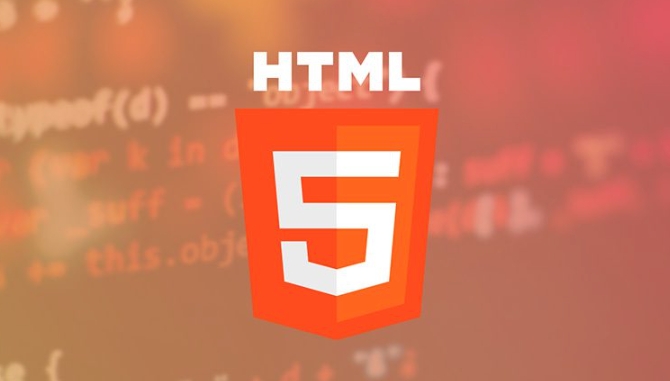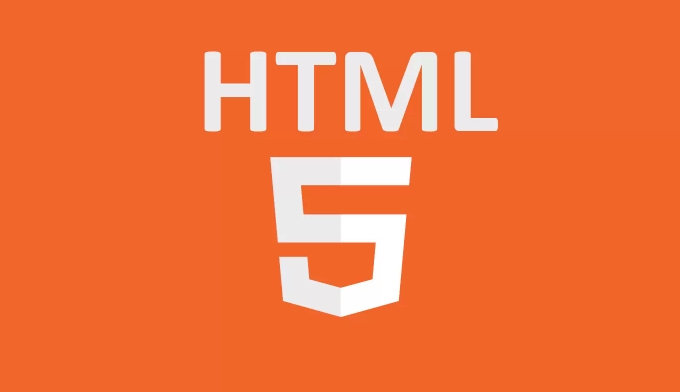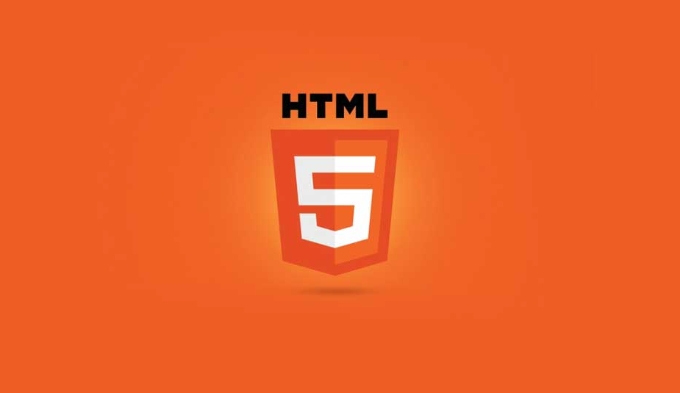Understanding the new input types available in HTML5 forms.
Jul 02, 2025 pm 04:19 PMHTML5 introduces a variety of new input types to improve form functionality and user experience, including email, number, date, range, etc. The email type is used to enter the email address, supports automatic format verification and mobile device optimization keyboard; number is used for digital input, supports setting minimum, maximum and step size; date provides a built-in date selector and submits in ISO format; range implements sliding bar controls, suitable for scenes such as volume or rating. These input types can be elegantly downgraded to normal text boxes in older browsers, ensuring compatibility while enhancing mobile availability.

HTML5 introduced several new input types that make form creation more powerful and user-friendly. These input types help browsers understand what kind of data users should enter, which allows for better validation and even custom keyboard layouts on mobile devices.

Here are a few key input types you should know about and how they can be useful in practice:

email — For email address input
This input type is designed specifically for email addresses. When used on mobile devices, it often triggers an email-optimized keyboard layout with an @ symbol readily accessible.
What it does:

- Browsers will automatically check if the entered value matches a basic email format (like user@domain.com).
- Doesn't require extra JavaScript to validate simple email patterns.
Example usage:
<input type="email" name="user_email" placeholder="you@example.com" required>
Tips:
- Still use server-side validation; browser checks can be bypassed.
- You can allow multiple emails by adding the
multipleattribute.
number — For numeric input
Use this when you want users to enter a number. It usually shows up as a spinner control in desktop browsers or a numeric keypad on mobile.
What it does:
- Restricts input to numbers.
- Supports min, max, and step attributes for fine control.
Example usage:
<input type="number" name="quantity" min="1" max="10" step="1">
Tips:
- Avoid using this for things like postal codes — some countries have leading zeros or other formats that may not work well here.
- If you need decimal values, set
step="any"or specify a decimal step likestep="0.1".
date — For date selection
This input type gives users a built-in date picker in supporting browsers.
What it does:
- Lets users pick a date without needing a JavaScript calendar widget.
- Sends the date in ISO format (
YYYY-MM-DD) to the server.
Example usage:
<input type="date" name="birthday">
Tips:
- Browser support varies — some older ones fall back to a text input.
- Styling is limited because it's rendered by the browser.
range — For slider controls
Useful for letting users pick a value from a range without typing.
What it does:
- Displays a slider.
- Often used for settings like volume, rating, brightness, etc.
Example usage:
<input type="range" name="volume" min="0" max="100" value="50">
Tips:
- Add a
<output></output>element near by showing the current value visually. - Not ideal for precision input since it's hard to select exact values ??with a slider.
There are a few others like tel , url , color , and search , each with their own specific behavior and use cases. While they don't all change functionality dramatically, they do improve usability and accessibility, especially on mobile devices.
Most of these inputs gracefully degrade into regular text fields on older browsers, so you can use them safely while still providing a fallback.
Basically that's it.
The above is the detailed content of Understanding the new input types available in HTML5 forms.. For more information, please follow other related articles on the PHP Chinese website!

Hot AI Tools

Undress AI Tool
Undress images for free

Undresser.AI Undress
AI-powered app for creating realistic nude photos

AI Clothes Remover
Online AI tool for removing clothes from photos.

Clothoff.io
AI clothes remover

Video Face Swap
Swap faces in any video effortlessly with our completely free AI face swap tool!

Hot Article

Hot Tools

Notepad++7.3.1
Easy-to-use and free code editor

SublimeText3 Chinese version
Chinese version, very easy to use

Zend Studio 13.0.1
Powerful PHP integrated development environment

Dreamweaver CS6
Visual web development tools

SublimeText3 Mac version
God-level code editing software (SublimeText3)

Hot Topics
 HTML Table Layout
Sep 04, 2024 pm 04:54 PM
HTML Table Layout
Sep 04, 2024 pm 04:54 PM
Guide to HTML Table Layout. Here we discuss the Values of HTML Table Layout along with the examples and outputs n detail.
 HTML Input Placeholder
Sep 04, 2024 pm 04:54 PM
HTML Input Placeholder
Sep 04, 2024 pm 04:54 PM
Guide to HTML Input Placeholder. Here we discuss the Examples of HTML Input Placeholder along with the codes and outputs.
 What Does H5 Refer To? Exploring the Context
Apr 12, 2025 am 12:03 AM
What Does H5 Refer To? Exploring the Context
Apr 12, 2025 am 12:03 AM
H5referstoHTML5,apivotaltechnologyinwebdevelopment.1)HTML5introducesnewelementsandAPIsforrich,dynamicwebapplications.2)Itsupportsmultimediawithoutplugins,enhancinguserexperienceacrossdevices.3)SemanticelementsimprovecontentstructureandSEO.4)H5'srespo
 HTML5 Interview Questions
Sep 04, 2024 pm 04:55 PM
HTML5 Interview Questions
Sep 04, 2024 pm 04:55 PM
HTML5 Interview Questions 1. What are HTML5 multimedia elements 2. What is canvas element 3. What is geolocation API 4. What are Web Workers
 Is h5 same as HTML5?
Apr 08, 2025 am 12:16 AM
Is h5 same as HTML5?
Apr 08, 2025 am 12:16 AM
"h5" and "HTML5" are the same in most cases, but they may have different meanings in certain specific scenarios. 1. "HTML5" is a W3C-defined standard that contains new tags and APIs. 2. "h5" is usually the abbreviation of HTML5, but in mobile development, it may refer to a framework based on HTML5. Understanding these differences helps to use these terms accurately in your project.
 Is H5 a Shorthand for HTML5? Exploring the Details
Apr 14, 2025 am 12:05 AM
Is H5 a Shorthand for HTML5? Exploring the Details
Apr 14, 2025 am 12:05 AM
H5 is not just the abbreviation of HTML5, it represents a wider modern web development technology ecosystem: 1. H5 includes HTML5, CSS3, JavaScript and related APIs and technologies; 2. It provides a richer, interactive and smooth user experience, and can run seamlessly on multiple devices; 3. Using the H5 technology stack, you can create responsive web pages and complex interactive functions.
 H5 and HTML5: Commonly Used Terms in Web Development
Apr 13, 2025 am 12:01 AM
H5 and HTML5: Commonly Used Terms in Web Development
Apr 13, 2025 am 12:01 AM
H5 and HTML5 refer to the same thing, namely HTML5. HTML5 is the fifth version of HTML, bringing new features such as semantic tags, multimedia support, canvas and graphics, offline storage and local storage, improving the expressiveness and interactivity of web pages.
 Understanding H5 Code: The Fundamentals of HTML5
Apr 17, 2025 am 12:08 AM
Understanding H5 Code: The Fundamentals of HTML5
Apr 17, 2025 am 12:08 AM
HTML5 is a key technology for building modern web pages, providing many new elements and features. 1. HTML5 introduces semantic elements such as, , etc., which enhances web page structure and SEO. 2. Support multimedia elements and embed media without plug-ins. 3. Forms enhance new input types and verification properties, simplifying the verification process. 4. Offer offline and local storage functions to improve web page performance and user experience.






